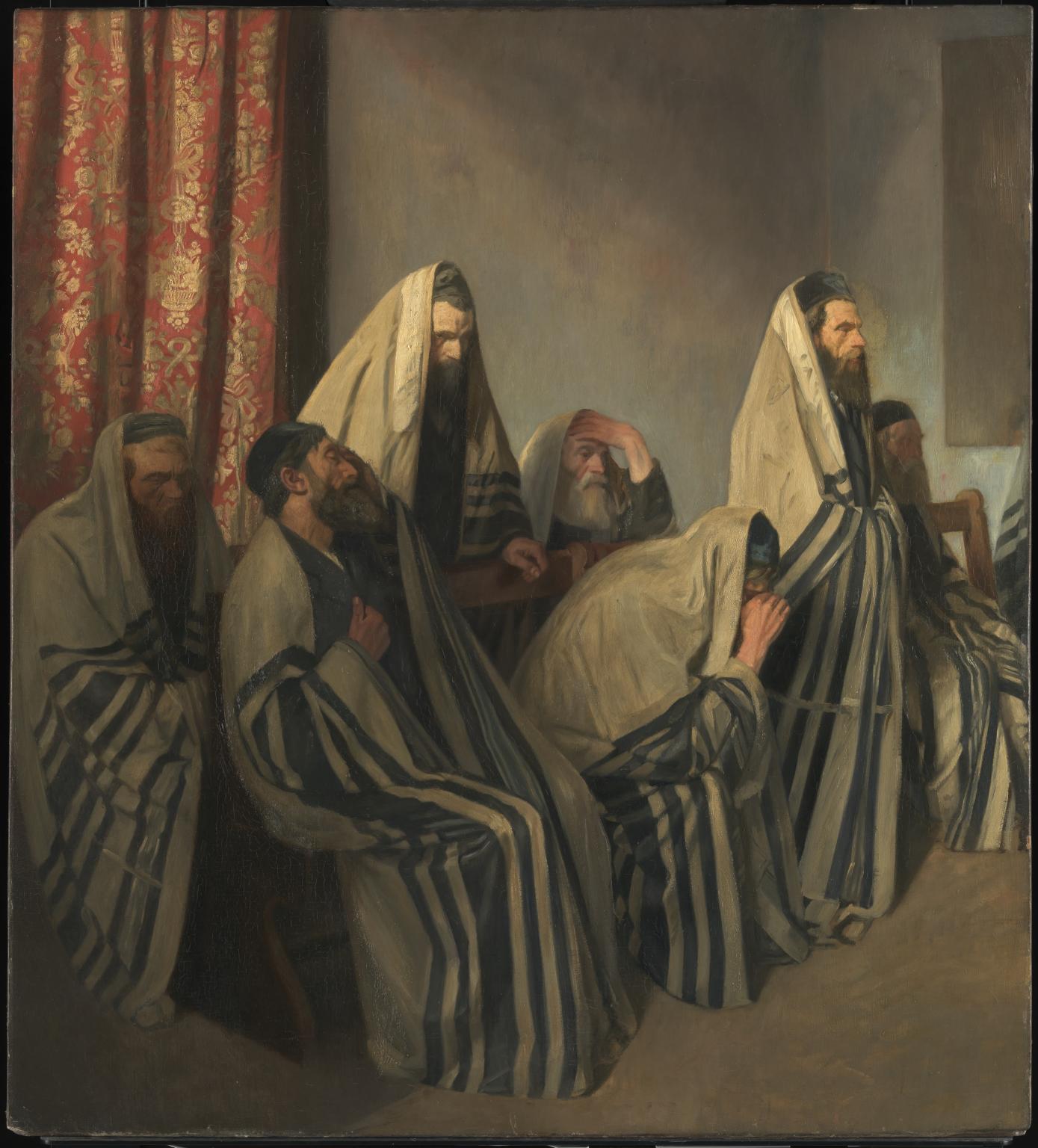Jewish customs and practices surrounding the death of an immediate family member – like burial and tearing one’s clothing – often have roots in biblical texts. Later Jewish works elaborate on how to act during different stages of mourning – before burial, the week following the burial, the month following death, and the year following death – and how practices may differ depending on the mourner's relationship to the deceased. Many Jewish mourning practices embody values such as honoring the dead and elevating their souls.
Notable Sources
All Sources
A
Mourning, InterruptedMISHNAH
Mourning, Interrupted
MISHNAH
How does one reconcile the joy of a holiday with the sadness of mourning a loved one? The Mishnah, the first codification of Jewish law, from the early third-century land of Israel, answers this question.
Prioritizing Joy HALAKHAH
Prioritizing Joy
HALAKHAH
If a parent dies during the first week after a marriage, does the newlywed carry on their celebration or turn to their mourning? Rambam, in his monumental 12th-century legal code, the Mishneh Torah, tells us.
Too Much Mourning MIDRASH
Too Much Mourning
MIDRASH
How much mourning is too much? The Ein Yaakov, a 16th-century compilation of talmudic stories, parables, and biblical interpretation, tells a story to warn against mourning too much.
Mourning Food: Symbolic LentilsTALMUD
Mourning Food: Symbolic Lentils
TALMUD
Why are lentils associated with Jewish mourning? The Babylonian Talmud in tractate Bava Batra offers a couple of explanations.
For How Long Does One Recite Kaddish for a Parent? HALAKHAH
For How Long Does One Recite Kaddish for a Parent?
HALAKHAH
It is the typical practice of Ashkenazic to recite Kaddish for a parent for 11 months. Rabbi Shlomo Ganzfriend, in his mid-19th-century halakhic digest, the Kitzur Shulchan Arukh, explains this practice in more detail.
When There is No One to MournTALMUD
When There is No One to Mourn
TALMUD
What happens if a person dies and there is no one to mourn their loss? The Babylonian Talmud in tractate Shabbat recounts how in such a case the third-century amora Rav Yehuda bar Yechezkel arranged proper mourning.
Yahrzeit Practices MUSAR
Yahrzeit Practices
MUSAR
For some, it is customary to fast on the anniversary of their loved one's death. Rabbi Tzvi Hirsch Kaidanover, in his 17th-century ethical and mystical work, Kav HaYashar, outlines a number of yahrzeit practices and their significance.
Sigh in Silence TALMUD
Sigh in Silence
TALMUD
During the period of shiva — certainly during the first half — one refrains from asking how the mourner is doing. The Babylonian Talmud in tractate Moed Katan explains from where this practice is derived.
When a Sage Passes Away TOSEFTA
When a Sage Passes Away
TOSEFTA
Given the stature of a Torah sage, when one dies, everyone mourns the loss. The Tosefta, an ancient collection of rabbinic laws and teachings, describes how the entire community mourns.
The Days of Weeping MIDRASH
The Days of Weeping
MIDRASH
How many days are designated for crying upon the death of a loved one? The midrash in Bereshit Rabbah, the ancient midrash from the land of Israel on the book of Genesis, compares the Torah's different language upon the deaths of Jacob and Moses to teach that there is a time for crying.
God is GoodHALAKHAH
God is Good
HALAKHAH
In the early phases of mourning a loved one, many may feel that their relationship with God is strained. Perhaps so as to reinforce it, the anonymous author of the 13th- or 14th-century halakhic digest Kol Bo explains that in a house of mourning, during the grace after meals, one elaborates on God as the One who is good and does good.
When a Holiday InterruptsHALAKHAH
When a Holiday Interrupts
HALAKHAH
A Jewish holiday interrupts the initial seven-day mourning period, known as shiva, that begins with the burial. The Kitzur Shulchan Arukh, Rabbi Shlomo Ganzfried's 19th-century halakhic digest, explains how to recalculate the initial 30-day mourning period when a holiday interrupts the shiva.
Before the BurialTALMUD
Before the Burial
TALMUD
The Torah teaches that a person should be buried as soon as possible after the death. The rabbis teach in tractate Berakhot that the immediate relatives of the deceased are exempt from positive commandments until their loved one is buried so that they can focus their energies on a quick burial.
Jacob Refusal to Be Comforted CHASIDUT
Jacob Refusal to Be Comforted
CHASIDUT
The ancient rabbis warn against excessive mourning, which Jacob appears to be doing in response to the (false) report of Joseph's death. Rabbi Chaim Tyrer of Czernowitz, in his 18th-century Chasidic Torah commentary, offers an alternative interpretation of the passage in Genesis.
The Sources of Jewish Mourning PracticesGUIDES
The Sources of Jewish Mourning Practices
GUIDES
While there are mentions of biblical figures observing mourning practices, the details of their observances are neither clear nor explicitly commanded. Rabbi Adin Steinsaltz explains further in his introduction to tractate Moed Katan of the Babylonian Talmud, wherein the rabbis discuss mourning practices.
May You Be Comforted From HeavenCOMMENTARY
May You Be Comforted From Heaven
COMMENTARY
It can be hard to find the right words to say to a mourner, and so there are traditional phrases of consolation that one may offer. Rabbi Ovadiah of Bartenura, in his 15th-century commentary on the Mishnah, describes the practice of forming two lines through which mourners pass after the burial and what is said to them as they pass through.



